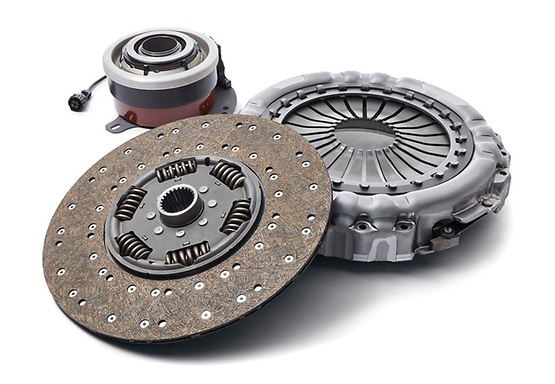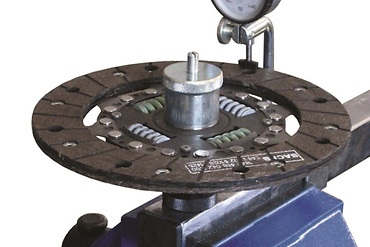The Concentric Clutch Actuation System, abbreviated ConAct, is an electronically controlled pneumatic clutch actuation system for commercial vehicles. In this workshop tip you will learn why calibrating the ConAct clutch actuator is neccessary.
How-to-guide

Today's standard clutch actuation system consists of a variety of components:
- Pneumatic clutch actuator
- Release fork
- Guide tube
- Clutch releaser
Each of these components represents an increased risk of failure. SACHS therefore substitutes the pull-type fork actuation with pneumatic clutch actuator, fork and clutch releaser with a push-type pneumatic release cylinder that is positioned concentrically around the transmission input shaft. The switch to a push-type actuation also makes it easier to assemble the transmission to the engine.
ConAct actuates the clutch via a concentric, pneumatic release cylinder. Its release travel is exactly regulated by a special valve. The system automatically records the data transmitted by the CAN bus, such as engine and transmission speed or accelerator pedal position, and uses this data to determine the optimal release position. This helps the driver in demanding driving situations, such as maneuvering, launching on hills with a heavy load or on slick roads.

1. Travel sensor
2. Electropneumatic control valve
3. Transmission or vehicle electronics
4. ConAct release cylinder
5. Clutch disk
6. Pressure plate
7. Transmission input shaft

- Relief for the driver, in particular in combination with automated transmissions.
- Reduction of external transmission interfaces
- Simplified assembly thanks to the push-type design.
- Reduction of maintenance costs because hydraulics become obsolete
- Reduced system weight

The ConAct clutch releaser needs to be calibrated with a suitable diagnostic unit after installation. Observe the vehicle manufacturer specifications. Calibrating the clutch actuator is required for the following reasons:
- Teach-in process for the travel sensor
- Wear detection through the control unit
- Compensation of idle travel
- Quicker responsiveness
- Comfortable setting off
- Comfortable maneuvering
- Teach-in of the "kiss point" (describes the moment where the clutch slowly engages and the force is transmitted to the transmission input shaft)
If ConAct is not calibrated after repair, an error message might appear in the vehicle's display. Clutch grabbing might occur when setting off and the vehicle might be difficult to maneuver under load.
Problems calibrating the clutch release system may occur because the vehicle's compressed air reserve is not sufficient or because the air pressure is too low as a result of a clogged rough or fine air filter.
ZF Aftermarket product range
Discover the complete portfolio of clutch systems in our product catalog.



